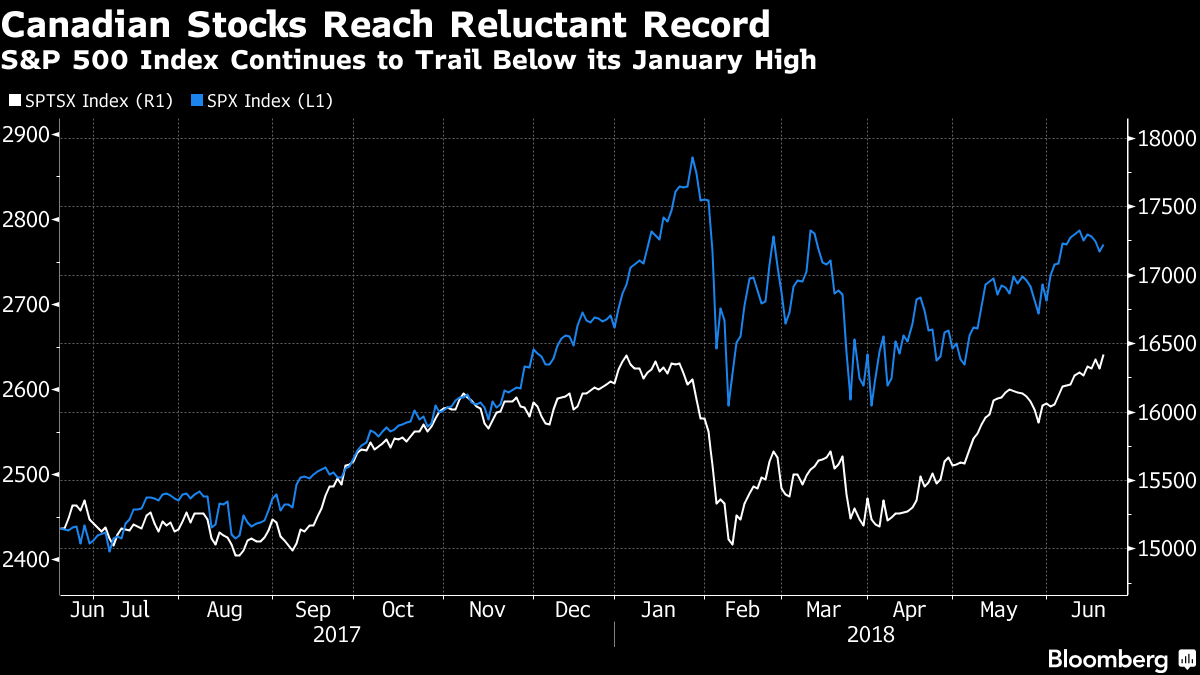Jun 20, 2018
Legal marijuana, oil send Canadian stocks to all-time high
, Bloomberg News

Canadian stocks surged to a record high on Wednesday, driven by soaring cannabis stocks and a rebound in the energy sector.
The S&P/TSX composite index closed up 104.42 points at 16,420.95, topping its previous record of 16,412.94 set Jan. 4. After a bout of volatility that sent global markets plunging in February, it took nearly six months for Canadian stocks to claw their way back to levels last seen at the beginning of the year. The S&P 500 Index is still trading about 3.6 per cent below its Jan. 26 high.
The benchmark stock index also eclipsed its record intraday high of 16,421.42 on Wednesday, hitting a new high of 16,444.45 at 3:24 p.m. ET.
“It’s odd, we had the Canadian economy accelerating through about mid-2017 and the TSX was fading and lagging the U.S., and now the economy’s really coming off the boil and the TSX is back at a record high,” said Robert Kavcic, senior economist at BMO Capital Markets.
Gains Tepid
Pot stocks jumped after Canada’s upper house voted to approve the legalization of recreational marijuana, putting the country on track to see the drug sold in stores on Oct. 17. Canopy Growth Corp. rose $2.83, or 6.65 per cent to close at $45.36.
Energy stocks, which account for about 19 per cent of the index, have gained 11 per cent since the beginning of the second quarter, making them one of the primary drivers of recent gains. The smaller health-care and technology sectors have done even better, posting gains of 22 per cent and 18 per cent respectively quarter-to-date.
The best-performing company year-to-date is Canada Goose Holdings Inc., up 128 per cent, followed by MEG Energy Corp. and Shopify Inc.
Still, Canada’s year-to-date performance is tepid at best. The benchmark is up 1.3 per cent since the beginning of 2018, putting it in the middle of the pack of developed-world stock markets. By comparison, the S&P 500 is up 3.7 per cent in 2018 and Norway, the top performer, has gained 9.4 per cent.
Strategists expect the S&P/TSX to end the year at 17,068, a further gain of 3.9 per cent, according to the average of 10 estimates compiled by Bloomberg. That compares with an average year-end forecast of 2,941 for the S&P 500 in the U.S., a projected gain of 6.1 per cent from current levels.
Kavcic said he doesn’t expect the momentum to continue, as he doesn’t see oil prices rising much beyond current levels and believes tighter monetary policy and slower credit growth will weigh on Canadian financials.
“Fundamentally, it’s not a negative environment but it might argue for maybe a little bit more modest performance from here on out for Canada stocks,” he said.







